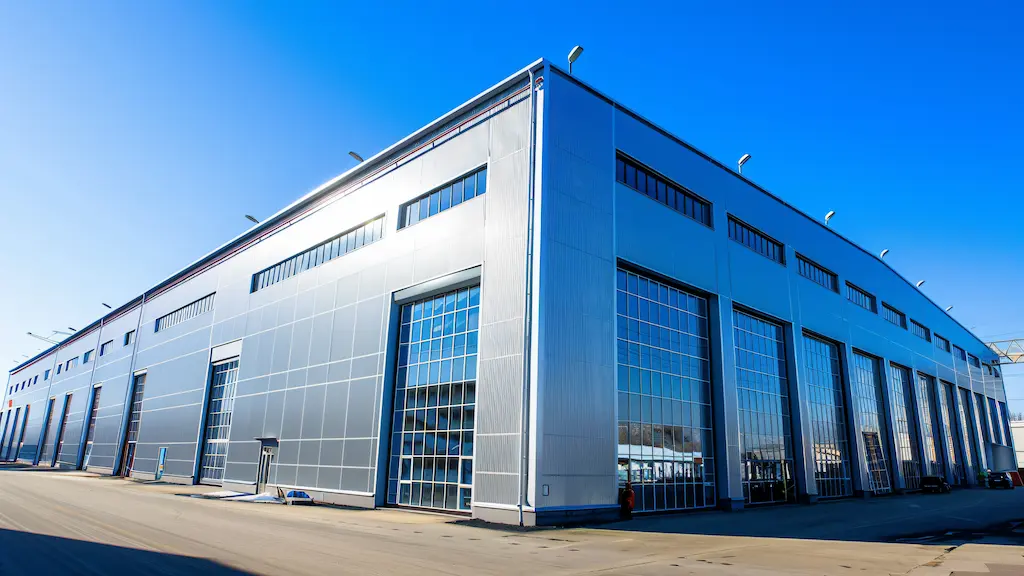Steel structure factory building

Steel Structure Factory Buildings: The Future of Industrial Construction
In the world of industrial construction, steel structure factory buildings have emerged as the gold standard for durability, efficiency, and sustainability. Whether you’re planning to build a new manufacturing facility, warehouse, or processing plant, steel structures offer unparalleled advantages that traditional construction methods simply cannot match. In this comprehensive guide, we’ll explore why steel structure factory buildings are the ideal choice for modern industrial needs, covering their benefits, applications, construction process, and future trends.
---
1. Why Choose Steel Structure Factory Buildings?
Steel structure factory buildings are revolutionizing the industrial construction sector, offering a perfect blend of strength, flexibility, and cost-effectiveness. Here’s why they are the preferred choice for businesses worldwide:
a. Unmatched Strength and Durability
Steel is one of the strongest construction materials available, capable of withstanding extreme weather conditions, heavy loads, and seismic activity. This makes steel structures ideal for factory buildings that need to house heavy machinery and equipment.
b. Speed of Construction
Steel structures are prefabricated off-site and assembled on-site, significantly reducing construction time. This allows businesses to start operations sooner, minimizing downtime and maximizing productivity.
c. Cost-Effectiveness
While the initial cost of steel may be higher than traditional materials, its long-term benefits far outweigh the investment. Steel structures require less maintenance, have longer lifespans, and are more resistant to damage, reducing lifecycle costs.
d. Design Flexibility
Steel’s versatility allows for innovative and customizable designs. Whether you need a clear-span structure for a large warehouse or a multi-story facility, steel can accommodate your specific requirements.
e. Sustainability
Steel is 100% recyclable, making it an eco-friendly choice for industrial construction. Additionally, steel structures can be designed to optimize energy efficiency, further reducing their environmental impact.
---
2. Applications of Steel Structure Factory Buildings
Steel structure factory buildings are suitable for a wide range of industrial applications, including:
a. Manufacturing Facilities
Steel structures provide the strength and flexibility needed to house heavy machinery and production lines. Their clear-span designs allow for unobstructed floor space, maximizing operational efficiency.
b. Warehouses and Distribution Centers
The durability and cost-effectiveness of steel make it ideal for warehouses and distribution centers. Steel structures can be easily expanded or modified to accommodate changing storage needs.
c. Processing Plants
From food processing to chemical plants, steel structures offer the durability and hygiene required for industrial processing facilities. They can be designed with specialized features like ventilation systems and corrosion-resistant coatings.
d. Automotive and Aerospace Facilities
Steel structures are widely used in the automotive and aerospace industries due to their ability to support heavy equipment and provide large, open spaces for assembly lines.
e. Agricultural Buildings
Steel structures are also used in agriculture for facilities like grain storage, livestock housing, and equipment sheds. Their durability and low maintenance requirements make them ideal for rural environments.
---
3. The Construction Process of Steel Structure Factory Buildings
The construction of a steel structure factory building involves several key stages, each carefully planned and executed to ensure a high-quality, durable facility.
a. Planning and Design
The first step is to develop a detailed plan and design for the factory building. This includes:
- Site Analysis: Assessing the location’s geological and environmental conditions.
- Custom Design: Creating a design that meets the specific needs of the business, including layout, dimensions, and special features.
- Engineering and Permits: Conducting structural analysis and obtaining necessary permits and approvals.
b. Material Procurement
High-quality steel and other materials are sourced and prefabricated off-site. This ensures precision and reduces construction time.
c. Foundation Construction
A strong foundation is critical for the stability of the factory building. This involves:
- Site Preparation: Clearing and leveling the land.
- Footings and Slabs: Pouring concrete footings and slabs to support the steel structure.
d. Steel Frame Assembly
The prefabricated steel components are transported to the site and assembled. This includes:
- Erecting Columns and Beams: Installing the primary structural elements.
- Adding Secondary Framing: Installing purlins, girts, and other secondary components.
e. Enclosure and Finishing
Once the frame is in place, the building is enclosed and finished. This includes:
- Roofing and Wall Panels: Installing steel panels for the roof and walls.
- Insulation: Adding insulation to improve energy efficiency.
- Doors and Windows: Installing access points and natural lighting features.
f. Utilities and Interior Fit-Out
The final step is to install utilities and complete the interior fit-out. This includes:
- Electrical and Plumbing Systems: Installing wiring, lighting, and plumbing.
- Flooring: Adding durable flooring suitable for industrial use.
- Specialized Equipment: Installing machinery, conveyors, and other equipment.
---
4. Advantages of Steel Structure Factory Buildings
Steel structure factory buildings offer numerous advantages over traditional construction methods:
a. Longevity and Low Maintenance
Steel structures are highly durable and require minimal maintenance, reducing long-term costs.
b. Energy Efficiency
Steel buildings can be designed with energy-efficient features like insulated panels and natural lighting, reducing energy consumption.
c. Fire Resistance
Steel is non-combustible, making it a safer choice for industrial facilities.
d. Pest Resistance
Unlike wood, steel is resistant to pests like termites, ensuring the integrity of the structure.
e. Expandability
Steel structures can be easily expanded or modified to accommodate future growth.
---
5. Future Trends in Steel Structure Factory Buildings
The future of steel structure factory buildings is bright, with several emerging trends shaping the industry:
a. Smart Factories
The integration of IoT (Internet of Things) technology is transforming steel structures into smart factories, enabling real-time monitoring and automation.
b. Green Building Practices
Sustainable construction practices, such as using recycled steel and renewable energy sources, are becoming increasingly popular.
c. Advanced Coatings
Innovative coatings are being developed to enhance the durability and performance of steel structures.
d. Modular Construction
Modular steel structures are gaining traction due to their efficiency and flexibility.
---
6. Why Choose Us for Your Steel Structure Factory Building?
At [Your Company Name], we specialize in designing and constructing high-quality steel structure factory buildings tailored to your specific needs. With years of experience, state-of-the-art technology, and a commitment to excellence, we deliver projects that are built to last.
Our Services Include:
- Custom design and engineering
- High-quality materials and construction
- Timely project delivery
- Competitive pricing
- Comprehensive after-sales support
---
Conclusion
Steel structure factory buildings are the future of industrial construction, offering unmatched strength, flexibility, and sustainability. Whether you’re building a new facility or expanding an existing one, steel structures provide the perfect solution for your industrial needs.
By choosing steel, you’re not just building a factory—you’re investing in a durable, efficient, and sustainable future. Let us help you bring your vision to life with a steel structure factory building that meets your goals and exceeds your expectations.
Build Smarter. Build Stronger. Build with Steel.




